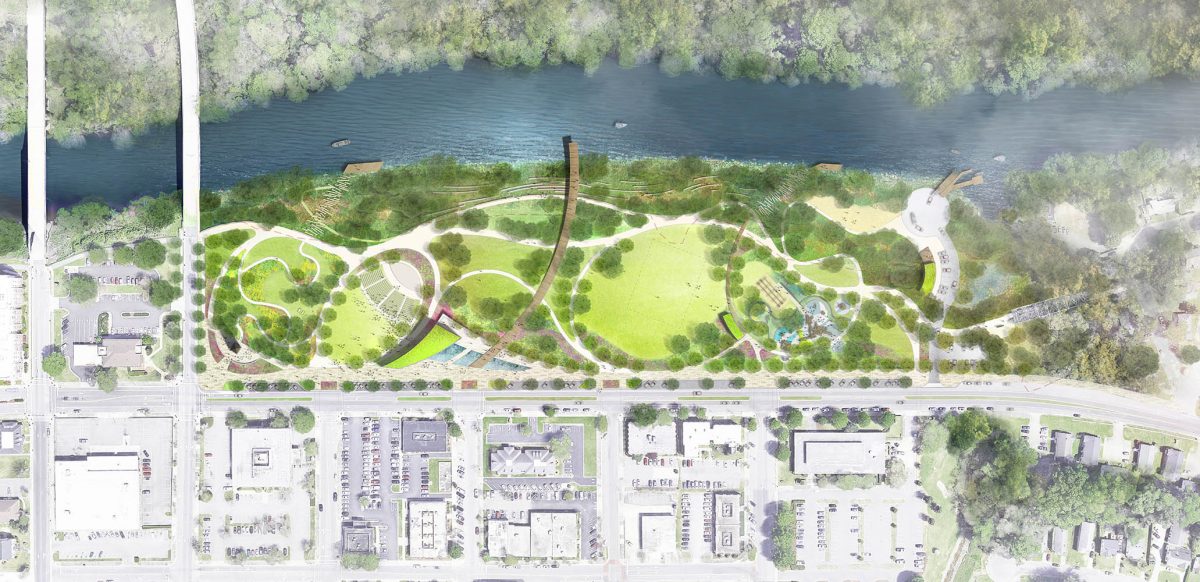
Eric Feldman is a Senior Associate and planner at Rhodeside & Harwell, a planning, urban design, and landscape architecture firm based in Alexandria, Virginia, just over the river from where he lives in Washington, D.C. Eric is also the father of a 5-year-old-girl, and has found that being a dad influences his thinking about his professional role as an urban planner.
He has written about the topic of child-friendly cities before, and answered our questions about the intersection of urbanism and family life.

Mandalyn: What exactly does a city planner do?
Eric: Urban planning is a broad profession; if you ask twelve planners, you’ll get twelve different answers about what they do! I fall on the traditional side with my work on the physical aspects of communities: land use, urban design, urban form, streets, public places, and buildings.
Planning can mean looking into the future to develop long-range plans about how a neighborhood, corridor, or entire city is going to develop over time. Other urban planners focus on the day-to-day tasks of shaping the changes in the city, reviewing development plans, and ensuring long range plans are implemented incrementally. There are specialized city planners too – people who work in areas like housing and economic development, transportation, social services, parks, historic preservation, and environmental protection.
Urban planners wear many hats. The short answer is that we work with communities to improve and manage quality of life in places where people live and work.
Mandalyn: Can you give an example of a project you’re currently working on?
Eric: I typically work on long-range planning and urban design studies focused on a particular site, neighborhood, corridor, or entire city. I’ve also done environmental studies, and lately I’ve been able to merge personal and professional interests in an exciting project.
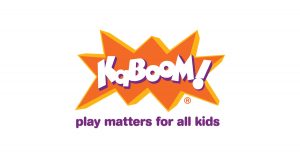 Over the past year I’ve had the opportunity to contribute to a national initiative led by KaBOOM!, a non-profit dedicated to bringing play into the daily lives of all kids. The project focuses on making play more accessible to kids and caregivers and more equitable for all demographics. The goal is to bring small play installations to everyday spaces close to home and school – places like pocket parks, along sidewalks, in civic spaces, and within housing developments. This will give more opportunities for play in a family’s daily routine.
Over the past year I’ve had the opportunity to contribute to a national initiative led by KaBOOM!, a non-profit dedicated to bringing play into the daily lives of all kids. The project focuses on making play more accessible to kids and caregivers and more equitable for all demographics. The goal is to bring small play installations to everyday spaces close to home and school – places like pocket parks, along sidewalks, in civic spaces, and within housing developments. This will give more opportunities for play in a family’s daily routine.
Research has shown that play is critically important for healthy child development, but kids today are spending less time in play. This is particularly the case for low-income kids. KaBOOM’s Play Everywhere initiative seeks to address this “play gap” by making play more convenient and equitable, and giving kids regular access to meaningful and active play.
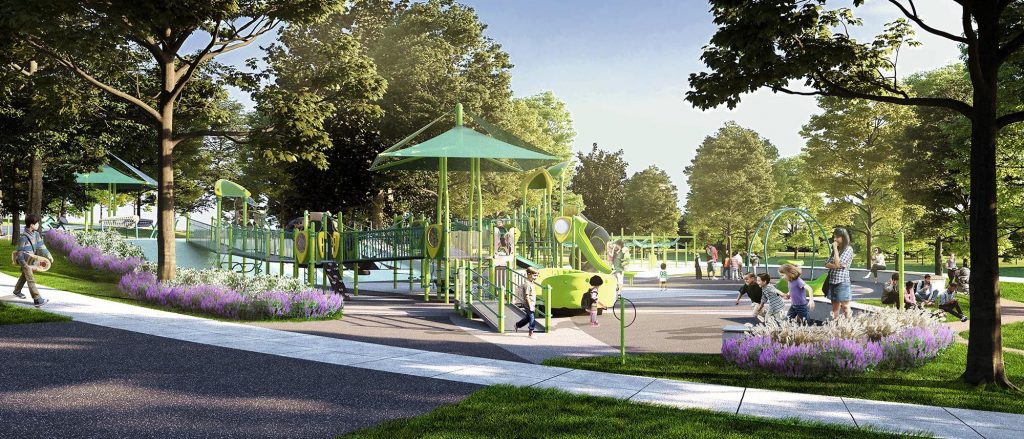
Mandalyn: You mean making play even more accessible and coming up with ideas for how to integrate it into other parts of life? Even beyond the playground?
Eric: Yes. It’s not always an easy decision to “go out and play” if you don’t have good access to a playground or if you’re working with limited time. And as every parent knows, outings can be a complicated logistical challenge, negotiation task, and contingency planning effort with your child just to get yourselves to the park!
Cities and neighborhoods are now transforming the places where kids and families conduct their daily business into kid-friendly spaces open for play.
Mandalyn: What a wonderful project! That inspires me to look for ways to add play to our daily routines.
I often come across the phrase “kid-friendly city” – it seems to have become a buzzword lately! Why is designing a city to be child-friendly such a big deal?
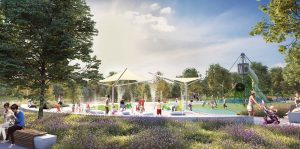
Eric: A child’s place in the city has been an afterthought for too long. From a global perspective, the sheer number of kids and families living in cities is significant and is only going to increase as the world and the areas in and around cities continue to urbanize. For that reason, it’s a crucial topic to focus on.
Particularly in America, the prevailing attitude used to be that if you lived in the city, had children, and had the means to relocate, you would. The city had an expiration date, and at some point you knew you would need to move out. But this narrative is starting to change! Cities have been rebounding (some have argued rebounding too much to the point of exclusion and other challenges like affordability) and families like ourselves are giving it a go and trying to make family life work in the city. The reality is that there’s a lot more to be done to make our cities as family-friendly as possible, and while some challenges are starting to be addressed, others are still works in progress.
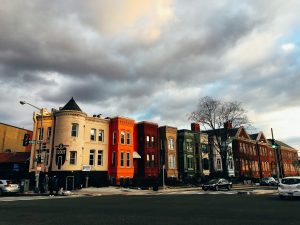 The idea is also generating attention from a social and economical perspective. Cities are realizing they can’t just cater to millennials and single households. There are economical reasons – counter to the cliché that families strain budgets and services – for attracting and retaining families, as well as social and civic arguments for keeping families in the city. Research is beginning to show that families can be economic engines and on average (not across the board, but on average) have more disposable income and create a demand for other services that might not exist, like childcare.
The idea is also generating attention from a social and economical perspective. Cities are realizing they can’t just cater to millennials and single households. There are economical reasons – counter to the cliché that families strain budgets and services – for attracting and retaining families, as well as social and civic arguments for keeping families in the city. Research is beginning to show that families can be economic engines and on average (not across the board, but on average) have more disposable income and create a demand for other services that might not exist, like childcare.
Cities such as New York and Washington, DC are beginning to understand that a city needs to be balanced. In order to have a healthy social fabric and healthy civic engagement you need to have intergenerational communities. Families are more likely to plant roots, be civically engaged, and build the social capital that makes a community healthy. For all of these reasons, there’s a competitive advantage to attracting and keeping families in the city.
Mandalyn: Is it true that everyone thrives in cities where kids thrive?
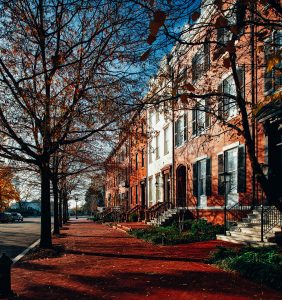
Eric: There’s an oft-repeated quote attributed to Enrique Peñalosa, the past and current mayor of Bogotá, Colombia, who said kids are an “indicator species” of sorts. If cities work for kids, chances are they will work well for everyone.
I would add that if you plan for the youngest and oldest members of your community as well as for those with specific needs and vulnerabilities, chances are you’re going to create places that work for everybody. Creating kid-friendly cities is not about putting Elmo on every street corner. It’s about creating spaces where people can mix, where there is diversity, and where all ages are considered and served.
We need to think about the space outside the playground when we create a kid-friendly city – the places where everyone gathers. Are the sidewalks safe and walkable? Does the housing stock accommodate families? Are streets safe to cross? And so on. These are the basic ideas of good planning and design, and they work regardless of who is using the space.
Mandalyn: You’re saying that kid-friendly cities have to start by being safe cities, and that’s the foundation of every city.
Eric: Yes. We need to approach the city holistically. The needs of kids and families have to be taken into account along with everyone else who calls the city home.
Increasingly, equity is becoming an issue in urban places. There are communities and places that are tremendously kid-friendly and fantastic places to be, but they often come with a steep price tag. Demographics look like more of a barbell with people concentrated and the high and low ends of the income spectrum, and there are geographic disparities related to that. So the idea of making the entire city work for all kids and all people of every age and demographic is a big issue.
We need to approach the city holistically. The needs of kids and families have to be taken into account along with everyone else who calls the city home.
Mandalyn: Can you give some examples of child-friendly city design?
Eric: There are a lot of small details that have significant impacts and they aren’t dramatically different than the cornerstones of good planning and design. Safe, navigable, pleasant sidewalks is a good example. Parents want to safely navigate through the city, sometimes with multiple children. Street trees and parked cars can serve as a buffer between traffic and the sidewalk so kids can have a little more freedom and parents don’t have to be constantly vigilant about their every move. Physical, clearly marked crosswalks are critical, along with signals that allow enough time to cross the street, particularly if you’re pulling a tricycle or scooter in one hand and a child in the other. Those small details make a big difference.
One thing that has been coming to the forefront of the discussion on child-friendly cities is the tremendous benefits that nature has for kids. It’s important for mental health, emotional health, development, mood, and learning. Thinking about how to integrate even little pockets of nature into the urban environment needs to become a bigger conversation! Access to nature, aside from the health benefits, creates interesting places and play opportunities and softens the impact of urban activity.
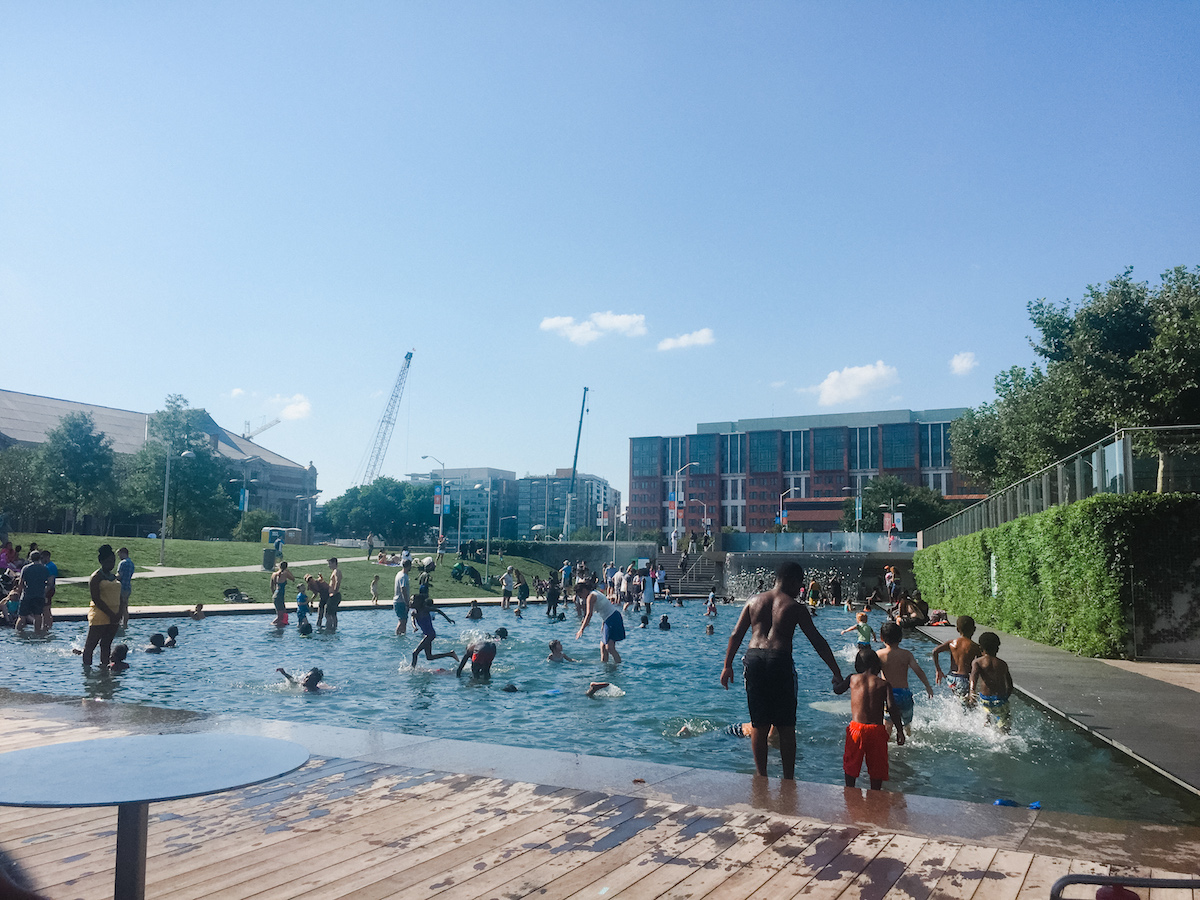
Mandalyn: So those small details can make or break the urban experience for a family.
Eric: They can. And then there are the bigger issues.
If we step back to look at the big picture of urban family life, there are two big elephants in the room — housing and schools. Cities can have the most vibrant public spaces and amazing areas for play but if housing and schools (including childcare) isn’t considered, that creates a major obstacle for long term urban living for families.
To address housing: there has to be a sufficient variety of housing options. There’s a phrase in planning jargon called the “missing middle” which is everything from townhouses to duplexes, to smaller apartment buildings – these housing types can’t be forgotten or pushed aside by more studios, one bedroom apartments, and multimillion dollar houses. Oftentimes the new construction doesn’t meet the needs of families, and that’s an issue along with affordability.
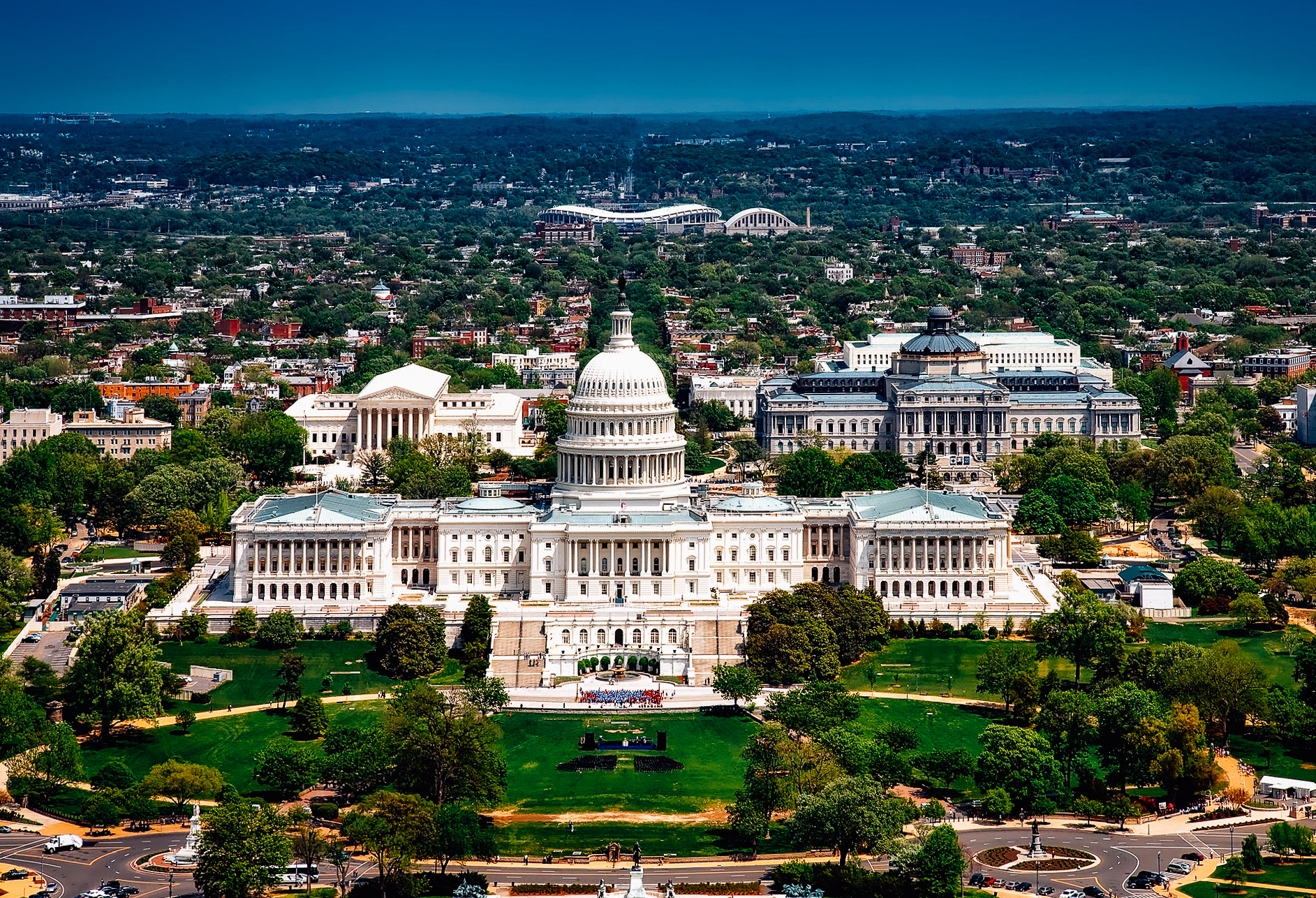
Schools are also an important part of a family’s decision to remain in the city. Do schools provide a long-term educational option that is in the best interest of you child? Is there a path through middle and high school that doesn’t require paying for private school? It’s a huge issue that parents who love city and want to always live in the city have to face. We’re getting closer to the right solutions but there is still work to be done.
Mandalyn: You have a family of your own. Does being a city planner affect the way you view parenting, and conversely, does being a parent affect the way you work?
Eric: The personal and professional have become really intertwined. On the one hand, becoming a parent was a real awakening to the world around me. It caused me to start looking at streets and neighborhoods and public spaces and the routes I take with my daughter in an entirely different way – looking at things through her eyes. She notices things that I don’t, and it has created a much deeper personal appreciation for things that have always been established facts for me in terms of what a healthy community needs.
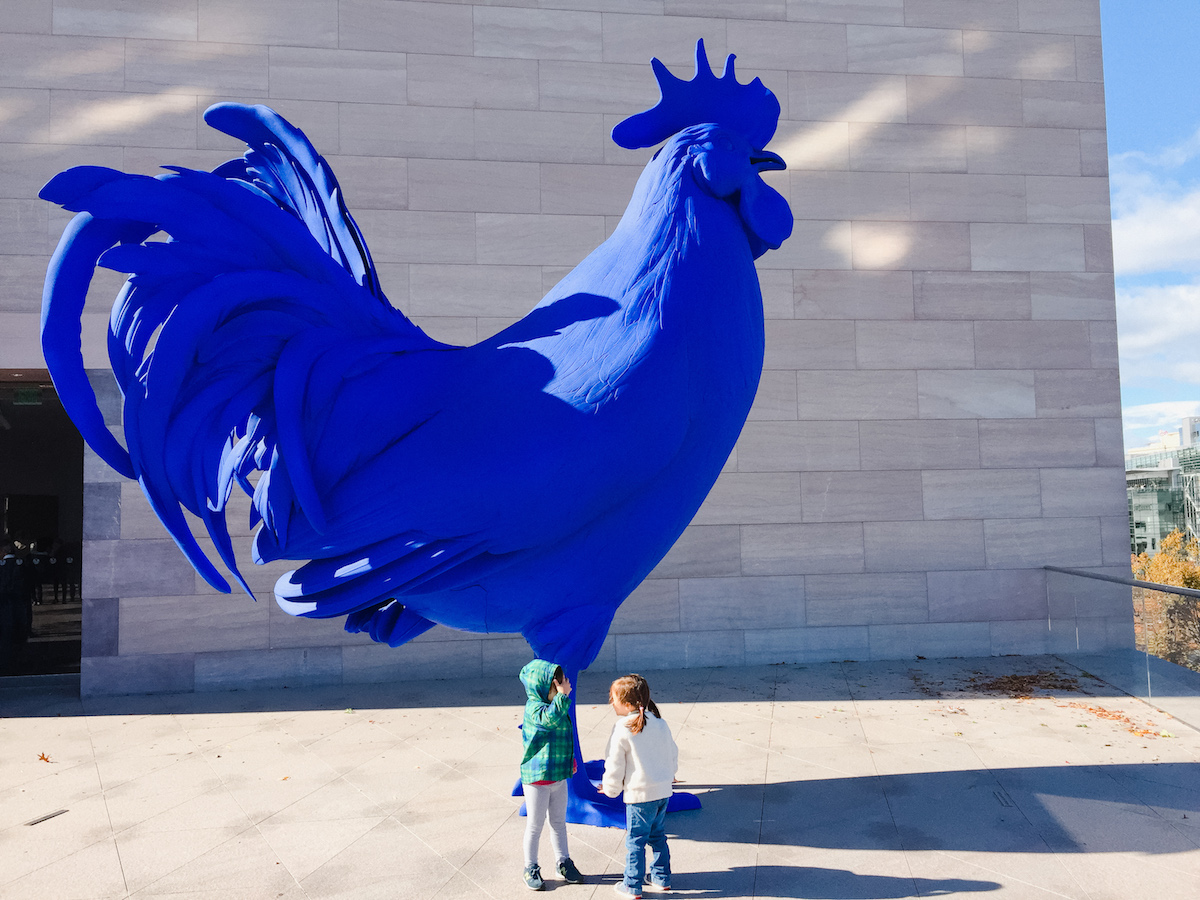 When my planner brain kicks in, I think about what really needs to happen to make places work for children and families. What accommodates kids well? What makes certain spaces feel unfriendly and unsafe? Does the form and layout of transportation options support, facilitate, or complicate life on a daily basis? Is it easy to access basic amenities? Is it easy to reach the destinations you want to bring your kids to or are there transportations challenges? Do some places require access to a car or too much time in a car to make it all work?
When my planner brain kicks in, I think about what really needs to happen to make places work for children and families. What accommodates kids well? What makes certain spaces feel unfriendly and unsafe? Does the form and layout of transportation options support, facilitate, or complicate life on a daily basis? Is it easy to access basic amenities? Is it easy to reach the destinations you want to bring your kids to or are there transportations challenges? Do some places require access to a car or too much time in a car to make it all work?
As a parent taking my daughter along for activities during the week and on weekends, I’m conscious of whether or not we feel welcome at a particular place. Do I feel safe and comfortable bringing my kid here? Does she enjoy it? Those are a big questions too. There unwritten environmental cues and safety considerations that affect how a place feels. They either welcome you into a space as a family or deter you or make you just want to get through it to where you’re going.
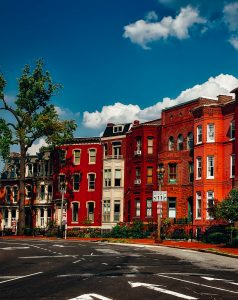 Mandalyn: I’ve experienced this walking the city! Some sidewalks feel too small and I get into the mindset of just get there. Just hurry up and get where you need to go.
Mandalyn: I’ve experienced this walking the city! Some sidewalks feel too small and I get into the mindset of just get there. Just hurry up and get where you need to go.
Eric: And God forbid you need to bring the stroller on the bus!
Mandalyn: Exactly! I feel those things subconsciously and I wondered if it would be more of a conscious thought for you – as a planner, you understand why a place might feel unfriendly or why we avoid taking a particular route.
Eric: It used to be subconscious, but now I’m thinking about it constantly. My life decisions – where we live and how we get around and where we spend our time – are all looked at through this other lens as a planner.
Mandalyn: City living with children is full of benefits, but it can be difficult in some ways too. Can you give some advice or encouragement to urban parents as they navigate life in the city with their kids?
Eric: Through the planner and designer lens, I’d just say open your eyes to your neighborhood and keep a eye out for opportunities to make it work better for you. You can be involved in small changes that have a big impact. I would also advise parents to think ahead and advocate for the things you want or know you’re going to want for your family, and alert your Council member to the things that are not working. The big decisions like schools and a good range of housing options can make or break your urban living. Viable transportation can too, particularly if home, work, school, and family activities are all in different places. Be an active participant in urban life and help ensure that kids and families needs are considered and brought to the forefront if possible.
Open your eyes to your neighborhood and keep a eye out for opportunities to make it work better for you. Be an active participant in urban life. Be honest with yourself and your family about what you need and want from your city.

On the personal front, I love cities! There’s a word for people like me: urbanophile. But as a father, while I love city life and everything cities have to offer, I am also realizing that there’s not a perfect package of urban living that’s going to meet all our needs. The perfect neighborhood with the preferred school, the ideal commute, the living arrangement and physical space you want and can afford, the access to amenities and things to do on the weekends – we’re not necessarily going to be able to get all of that in once place. Flexibility, compromises, and trade-offs have to happen, and I’d encourage other families to find that balance. It requires a lot of soul searching and prioritizing and being honest with yourself and your family about what you need and want from your city.
I truly believe that cities are fantastic, engaging, and enriching places to grow up. There’s a lot for us to navigate as urban families, but I think it’s worthwhile and I hope that with each generation the number of challenges will decrease, and we’ll feel less like pioneers.
Mandalyn: What are your favorite parts of your city to experience with your family?
Eric: Washington, D.C. has so many family-friendly places that are easy to access. We have a wealth of museums, and many of them are free. That gives us the luxury of being popping in for a short visit and not feeling like we need to spend the entire day there. My daughter is fond of the giant blue rooster sculpture on the roof terrace of the National Gallery, so that’s been a recurring stop lately. The National Building Museum is an impressive indoor space where kids can play and run around – great for winter weekends and less-than-ideal weather.
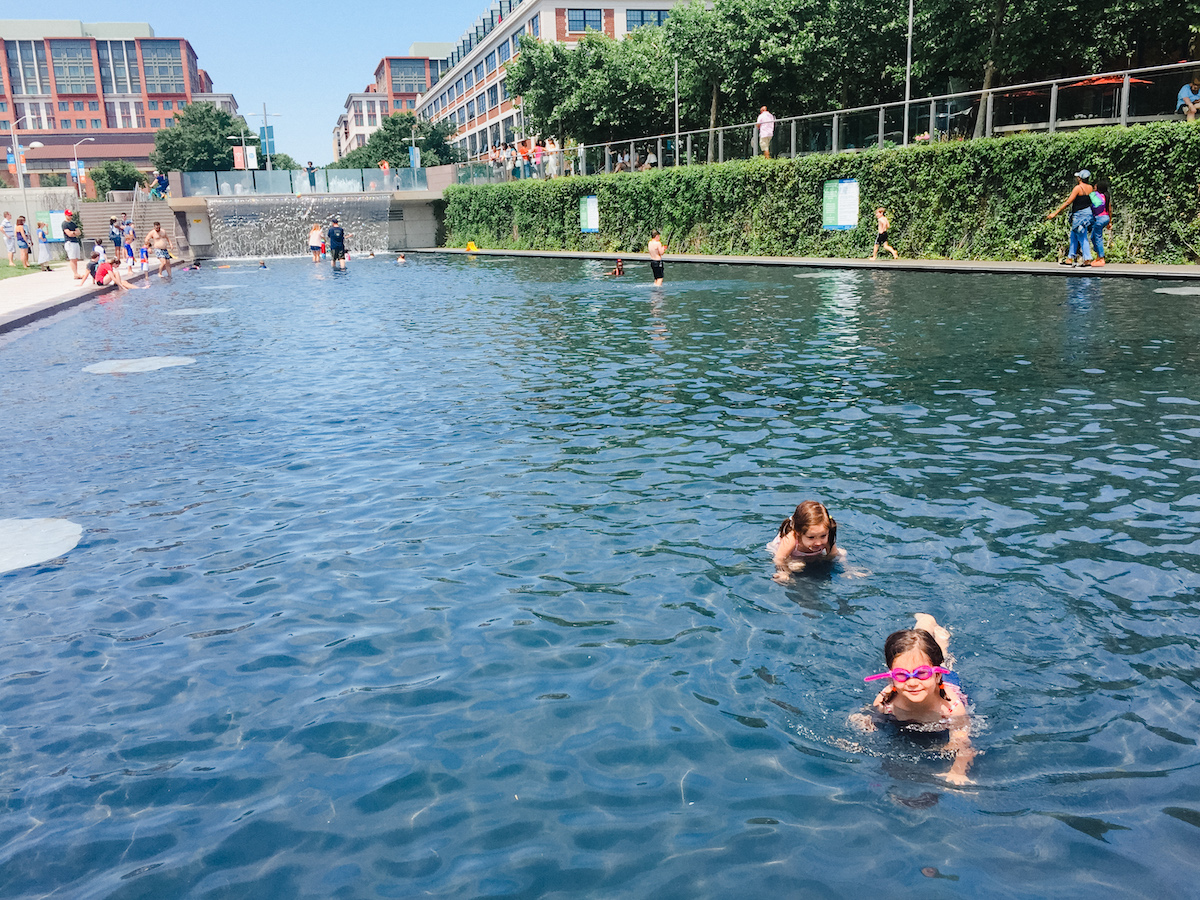
In the summer, we spend an inordinate amount of time at Yards Park, a relatively new park in the Capitol Riverfront neighborhood that includes a large splash pool with a waterfall. The splash pool is a fantastic space that’s well-designed for both kids and parents – my daughter loves the pool, and there are tables, moveable chairs, and a grassy hillside that allows parents to keep an eye on their kids while relaxing and socializing.
We also love going to Eastern Market; it’s located in the last of DC’s historic market buildings that still functions as an indoor food market. On weekends, the market activities spill outdoors into the surrounding streets with a farmer’s market and other vendors. It’s a place that satisfies my inner foodie and people-watcher, and my urban planner brain appreciates it for the display of public life. My daughter loves it too – apple vendors give her free samples and she always looks for her favorite street musicians. And I love that the farmer’s market helps her, to some extent, understand where her food comes from.
Connect with Eric on Twitter or Instagram and read his excellent article about child-friendly cities.
